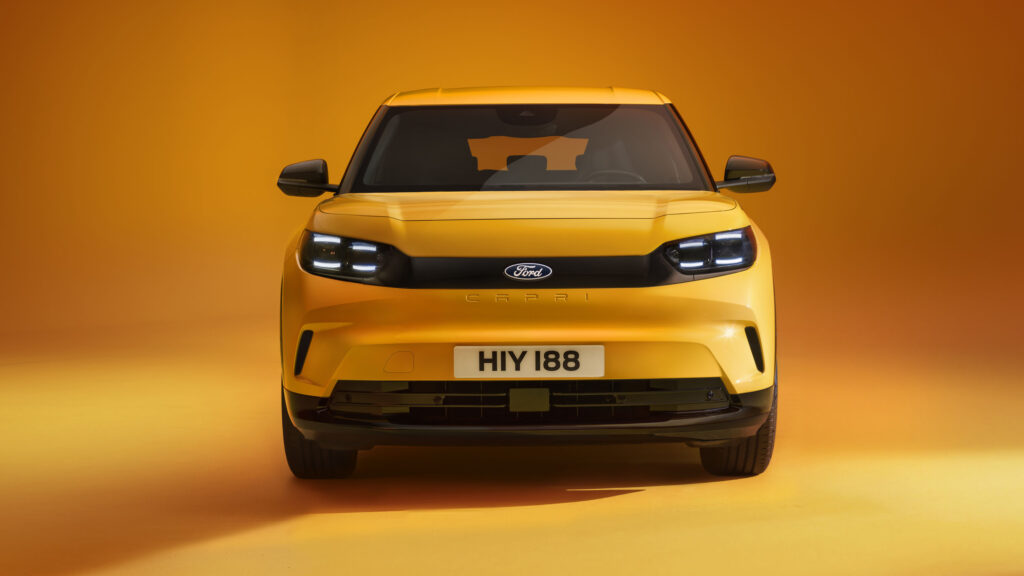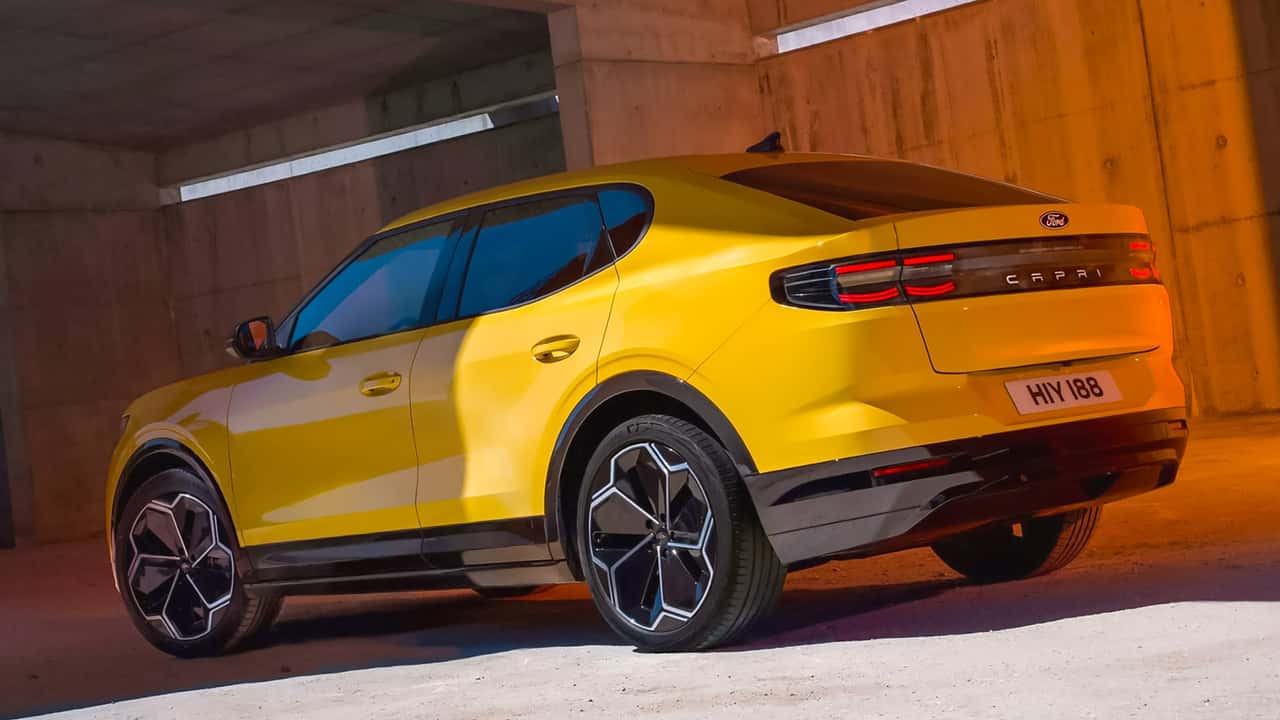The Ford Capri stands as a testament to an era when the automobile was not just a means of transportation, but a symbol of style, performance, and cultural identity. Launched in 1969, the Ford Capri quickly became an iconic model in the automotive world, known for its distinctive design, affordability, and driving pleasure. This article explores the rich history of the Ford Capri, its evolution, and its enduring legacy in the world of classic cars.
Table of Contents
ToggleThe Birth of the Ford Capri

The Ford Capri was born out of Ford’s desire to create a European equivalent to the Ford Mustang, which had taken the American market by storm in the mid-1960s. The idea was to produce a stylish, affordable, and fun-to-drive car that would appeal to a broad audience, particularly the younger generation. Ford of Europe, tasked with this ambitious project, set out to design a car that would capture the spirit of the Mustang while being perfectly suited to European tastes and roads.
In January 1969, the Ford Capri made its debut at the Brussels Motor Show. The response was overwhelmingly positive, with its sleek coupe design, long hood, and short rear deck drawing immediate comparisons to the Mustang. The Capri was marketed with the slogan “The car you always promised yourself,” emphasizing its aspirational appeal.
Design and Features
The Ford Capri’s design was one of its most striking features. With its low-slung body, pronounced hood bulge, and fastback roofline, the Capri exuded a sense of sportiness and dynamism. The design was the work of Ford’s British and German teams, led by Uwe Bahnsen, a renowned automotive designer. The Capri’s styling cues included a prominent grille, quad headlamps, and a distinctive rear end, all contributing to its unmistakable silhouette.
The interior of the Capri was designed with both comfort and driver engagement in mind. The cabin featured bucket seats, a driver-oriented dashboard, and a sporty steering wheel, creating an environment that encouraged spirited driving. Despite its sporty intentions, the Capri also offered practical features such as a reasonably spacious rear seat and a decent-sized trunk, making it a versatile choice for everyday use.
Performance and Variants

One of the key aspects of the Ford Capri’s appeal was its range of engine options, which catered to a wide spectrum of buyers. The initial lineup included engines ranging from a modest 1.3-liter inline-four to a more powerful 3.0-liter V6. This variety allowed customers to choose a Capri that matched their performance preferences and budget.
The entry-level models provided decent performance for everyday driving, while the higher-spec versions, particularly those equipped with the V6 engines, delivered thrilling acceleration and a more engaging driving experience. The Capri’s rear-wheel-drive layout and well-tuned suspension contributed to its reputation as a fun-to-drive car, offering sharp handling and a balanced ride.
Over the years, the Capri underwent several updates and revisions, introducing new variants and special editions. Notable among these were the Capri RS models, which were developed by Ford’s motorsport division. These high-performance versions featured enhanced engines, sportier suspensions, and distinctive styling elements, making them highly sought after by enthusiasts.
Racing Heritage
The Ford Capri’s prowess was not limited to the road; it also enjoyed considerable success on the racing circuit. The Capri’s racing career began in the early 1970s, and it quickly made a name for itself in various motorsport disciplines, including touring car racing and rallying. The Capri RS models, in particular, achieved numerous victories and championship titles, cementing the car’s reputation as a competitive and capable race car.
One of the most significant achievements in the Capri’s racing history was its success in the European Touring Car Championship (ETCC). The Capri RS 2600 and RS 3100 models dominated the championship in the early 1970s, competing against and often defeating rivals from BMW and Alfa Romeo. The Capri’s racing success further enhanced its appeal and solidified its status as a performance icon.
The Capri in Popular Culture

The Ford Capri’s impact extended beyond the automotive world; it also became a cultural icon, appearing in numerous films, television shows, and music videos. In the UK, the Capri was often featured in popular TV series, such as “The Professionals,” where it was driven by the show’s lead characters. This exposure helped to cement the Capri’s image as a cool and desirable car.
The Capri’s association with popular culture was not limited to the UK. It also made appearances in international films and became a favorite among car enthusiasts and collectors worldwide. Its distinctive design and sporty persona made it a natural choice for filmmakers looking to add a touch of style and excitement to their productions.
End of Production and Legacy
The Ford Capri’s production spanned three generations, with the final model rolling off the assembly line in December 1986. By this time, the automotive landscape had changed significantly, and the demand for sporty coupes had declined. However, the Capri’s departure from the market did not diminish its legacy.
In the years since its production ended, the Ford Capri has become a highly wdbos link alternatif sought-after classic car. Its combination of stylish design, engaging performance, and racing pedigree has made it a favorite among collectors and enthusiasts. Restored and well-maintained examples of the Capri can command high prices at auctions and are often featured at classic car shows and events.
The Capri’s enduring popularity is also reflected in the strong community of owners and fans who continue to celebrate and preserve the car’s legacy. Clubs and organizations dedicated to the Capri exist in many countries, providing a platform for enthusiasts to share their passion, exchange knowledge, and showcase their vehicles.
Conclusion
The Ford Capri remains a symbol of a bygone era when cars were designed to be more than just practical transportation. It represented a time when style, performance, and driving pleasure were paramount, and it captured the imagination of a generation. From its inception as a European counterpart to the Ford Mustang to its success on the racing circuit and its enduring legacy as a classic car, the Capri’s story is one of innovation, aspiration, and enduring appeal.
As we look back on the history of the Ford Capri, it is clear that its impact extends far beyond its years of production. It continues to inspire and captivate enthusiasts around the world, a true testament to its status as a timeless automotive icon. Whether remembered for its distinctive design, its racing achievements, or its role in popular culture, the Ford Capri will always hold a special place in the annals of automotive history.
Read More Article About “Syahrul Yasin Limpo: A Dynamic Leader in Indonesian Politics”

